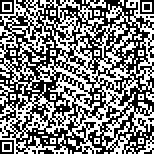锁冬梅,梁军,刘海杰,杨丽.下肢机器人对多发性硬化患者肌张力及残疾水平的影响[J].中华物理医学与康复杂志,2016,38(7):509-512
扫码阅读全文

|
| 下肢机器人对多发性硬化患者肌张力及残疾水平的影响 |
|
| |
| DOI: |
| 中文关键词: 多发性硬化 下肢机器人 功能扩展量表 痉挛 |
| 英文关键词: Multiple sclerosis Robots Gait training Spasticity |
| 基金项目:国家自然科学基金资助项目(81171183);国家临床重点专科建设项目;天津市应用基础与前沿技术研究计划(15JCZDJC35700);天津医科大学总医院青年孵育基金(Zyyfy2015013) |
|
| 摘要点击次数: 3783 |
| 全文下载次数: 5377 |
| 中文摘要: |
| 目的观察下肢机器人训练(RAGT)对于多发性硬化(MS)患者肌张力及残疾水平的影响。 方法选取痉挛伴有运动障碍的MS患者28例,其中对照组14例,治疗组14例。对照组给予常规康复训练,治疗组在常规康复训练的基础上应用RAGT进行辅助训练。于治疗前和治疗4周后(治疗后)采用改良的Ashworth量表和功能残疾扩展量表(EDSS)分别评价2组患者的痉挛程度及残疾水平。 结果治疗后,治疗组患者的Ashworth评分和EDSS评分分别为1.00分和5.25分,与组内治疗前和对照组治疗后比较,差异均有统计学意义(P<0.05);而对照组仅EDSS评分与组内治疗前比较,差异有统计学意义(P<0.05)。 结论常规康复训练结合机器人辅助步行训练可显著改善MS患者的痉挛程度和残疾水平。 |
| 英文摘要: |
| Objective To determine any effect of robot-assisted therapy (RAGT) in relieving disability and spasticity in patients with multiple sclerosis (MS). MethodsTwenty-eight MS patients were randomly divided into a treatment group and a control group. Both groups received routine rehabilitation, while the treatment group additionally underwent RAGT 5 times a week for 4weeks in the hospital. Both groups were assessed using the extended disability status scale (EDSS) and the modified Ashworth scale before and after the treatment. ResultsThere was no significant difference between the two groups′ average EDSS and modified Ashworth scores before the treatment. In the treatment group, both measurements significantly improved compared to those before the treatment and compared with those of the control group after the treatment. For the control group, significant differences were observed only by comparing the average EDSS score before and after the treatment. ConclusionRoutine rehabilitation can relieve disability, but it can hardly alleviate spasticity. However, RAGT combined with routine rehabilitation can improve both disability and spasticity. |
|
查看全文
查看/发表评论 下载PDF阅读器 |
| 关闭 |